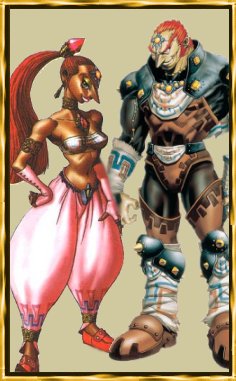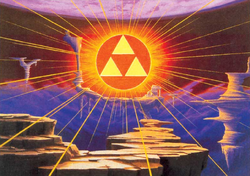Cultures and Controversies found in the Zelda Universe
The Legend of Zelda (first released 1986) is a long running series created by Nintendo, with the game usually centered around Link who helps to save the world and Princess Zelda from an existing evil, which is most often controlled by Ganondorf. The stories and styles vary from game to game, but almost always follows the same formula and has reoccurring characters.
For example, there are different species of characters found in the game repeatedly. These characters have very close knit cultures, and rarely in a Zelda game will you find them interacting outside of their environments, or in a multi-cultural environment. They are separated but not hostile, so this is a bad example of politics and interactions between characters of different culture.
It's easy to see where the inspiration comes from for certain species. The Zora are inspired by fish, blues, oceans, while Goron are rock, warm browns, and obviously belong on land. But beyond the visual inspiration, there is many religious influences. Influences that many gamers may not be aware of in the West, as many things were censored out of the Japanese version before release.
This study case is not focusing on just one game, but instead the entire series with regards to religious influences in fantasy character species, as well as other criteria set by my critical framework.
I want to begin by addressing Christianity in the Zelda games. Due to religious censorship all of the influences I'll research were removed in the West. The "Book of Magic" is originally refered to as a Bible in the original game. The word "Temple" was removed for several years, and introduced later. The word "God" was removed, and an in-game "Priest" were turned into a wizard. These clear symbols are signs of how prominent the Christianity structure is used within the Zelda universe, but it does not contribute to the visuals. Therefore, a change of name under censorship did not alter or obscure the visuals (with the exception of the "Book of Magic", still sporting a crucifix, as well as Link's shield).
The Gerudo race (see picture above) had ties to the Islamic religion it was influenced from. The original Gerudo symbol was a moon and star, but was replaced due to it's similarity to the Islamic icon. It can still be seen on Ganondorf's (A Gerudo and villian) clothing. But ultimately, this is proof that the Gerudo race was designed with Islamic cultures influence.
The Gerudo are in appearance tanned with red hair, and large pointy noses. They are all female, and a male is born once every 100 years to be their king. In this cycle, it's Ganondorf, who is represented as an evil person with bad intentions. The Gerudo women have low opinions of Hyrulian's. The Gerudo's clothes represent their environment of dessert and are filled with Egyptian and Middle Eastern influences. The Spirit Temple has strong ties to the Gerudo, housing the pictured above Mirror Shield containing the Gerudo symbol. The Temple itself sits in the desert and has ancient Egyptian and Arabic architecture and music influences. Finally, it houses a statue of the Goddess of Sand, the main deity of the Gerudo.
Religion in-game; The entire land of Hyrule (the Earth) seems to follow the legend of the Triforce, with the three Goddess'. The Triforce is seen on every temple, and is a symbol of courage, wisdom and power. It is neutral in good or evil, but instead offers its strength to those who deserve it (e.g. Link has the blessing of Courage, Ganondorf is often seen with the blessing of Power).
Cliche; Zelda is often renouned for it's creativity and originality. Even Final Fantasy claims to have been inspired by the Legend of Zelda. But despite it being old and creative in the games catagory, it is still littered with stereotypes of culture and religion, following the set rules of Europian Christian archetiecture, fashion and lush green/brightness evident at Hyrule Castle, to the desert, tanned, harsher and secluded people with Islamic influence with the Gerudo, and even the Goron, of the earth and their colour palettes. It's evolved as the games have evolved in technology, but these are still prominent stereotypes.
Results as compared to Critical Framework:








No comments:
Post a Comment